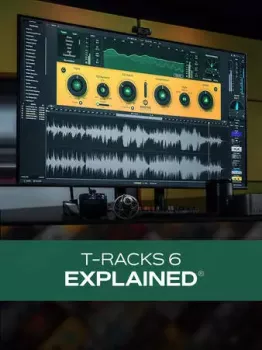Published 8/2023
MP4 | Video: h264, 1280x720 | Audio: AAC, 44.1 KHz
Language: English | Size: 769.55 MB | Duration: 1h 30m
英文简介:
Byzantine Music. The ison, oligon and apóstrophos. Practical Exercises 1 - 9
What you'll learn
To perform vocally individually or in a group, chants (songs) with the intervallic characters: the ison, oligon and apóstrophos
To perform correctly the exercises from 1to 9, from the perspective of the rhythm, duration, and pitch of sounds and to understand the exercises also in relatio
Be able to decipher on your own a score containing the characters: the ison, oligon and apóstrophos
To differentiate between the sonorities of the exercises with the base in NI and the base in PA
Requirements
No experience is needed. The course starts from scratch and is aimed at beginners. You will learn everything you need to know.
Description
The Byzantine music course “ByzMusic Lessons” is intended for all the lovers of ancient medieval vocal music in the entire world. The entire course proposes three main directions:1. the study of graphic signs of Byzantine music2. the study of modes which constitute the Októēchos (the eight Byzantine modes)3. the study of signs with a cheironomic value (expression and ornament signs)In this lesson, called “Practical Exercises 1 to 9”, I will begin with a short history of the evolution of Byzantine music notation and we will locate in time the Chrysanthic notation (from 1814), also known as “the Reform of the Three Teachers”, which we are going to study.Then I will present the sounds of Byzantine music scale,Ni Pa Vou Ga Di Ke Zo Niwith their approximate correspondents in the European music:Do Re Mi Fa Sol La Si Do.I will also talk about the martyrias of sounds and the traditional musical instrument kanonake. The study of Byzantine music is accomplished by using this instrument called psalterion or kanonake (qanun), which renders accurately the specific sound atmosphere of each Byzantine scale through the microtones that are characteristic for this music, tones which can easily be performed on this instrument. Byzantine tones may vary between 4 and 20 sections (units, commas).At the end of the introduction, I will present the vocal or intervallic signs (which indicate the sound emissions)The first and most important vocal or intervallic characters:? ison (for a straight course);? oligon (for an ascending course);? apóstrophos (for a descending course).The course continues by going through the first nine exercises, dedicated to the study of the three basic signs: the ison, oligon and apostrophos. These exercises are the most important ones, because they ensure the assimilation of the first basic elements in the study of Byzantine music. The exercises will be sung several times with accompaniment on the kanonake. At the end of each exercise, a slide containing a double notation is used for understanding the same exercise also from the perspective of staff-based notation.Of a maximum importance is going through the exercises, which are organized progressively and according to a particular didactic method.The purpose of this course is to ensure the acquisition of the skills for deciphering and chanting individually a Byzantine score, by understanding all the structural elements of modes and also to share with our contemporaries the sounds of ancient medieval music of a Byzantine origin.
Overview
Section 1: Introduction
Lecture 1 Introduction
Section 2: The first and most important vocal characters: the ison, the oligon, the apóstro
Lecture 2 Lesson 1
Section 3: Lesson 2
Lecture 3 Lesson 2
Section 4: Lesson 3
Lecture 4 Lesson 3
Section 5: Lesson 4
Lecture 5 Lesson 4
Section 6: Lesson 5
Lecture 6 Lesson 5
Section 7: Lesson 6
Lecture 7 Lesson 6
Section 8: Lesson 7
Lecture 8 Lesson 7
Section 9: Lesson 8
Lecture 9 Lesson 8
Section 10: Lesson 9
Lecture 10 Lesson 9
The course is intended for all people who are interested in chanting Byzantine music
官网: https://www.udemy.com/course/byzantine-music-lessons-step-by-step-part-1/






![French Connections: From Discotheque to Daft Punk – The Birth of French Touch by Martin James EPUB [EN]](https://audioz.download/uploads/posts/2024-09/thumbs/1727455731_407930774.webp)
评论0